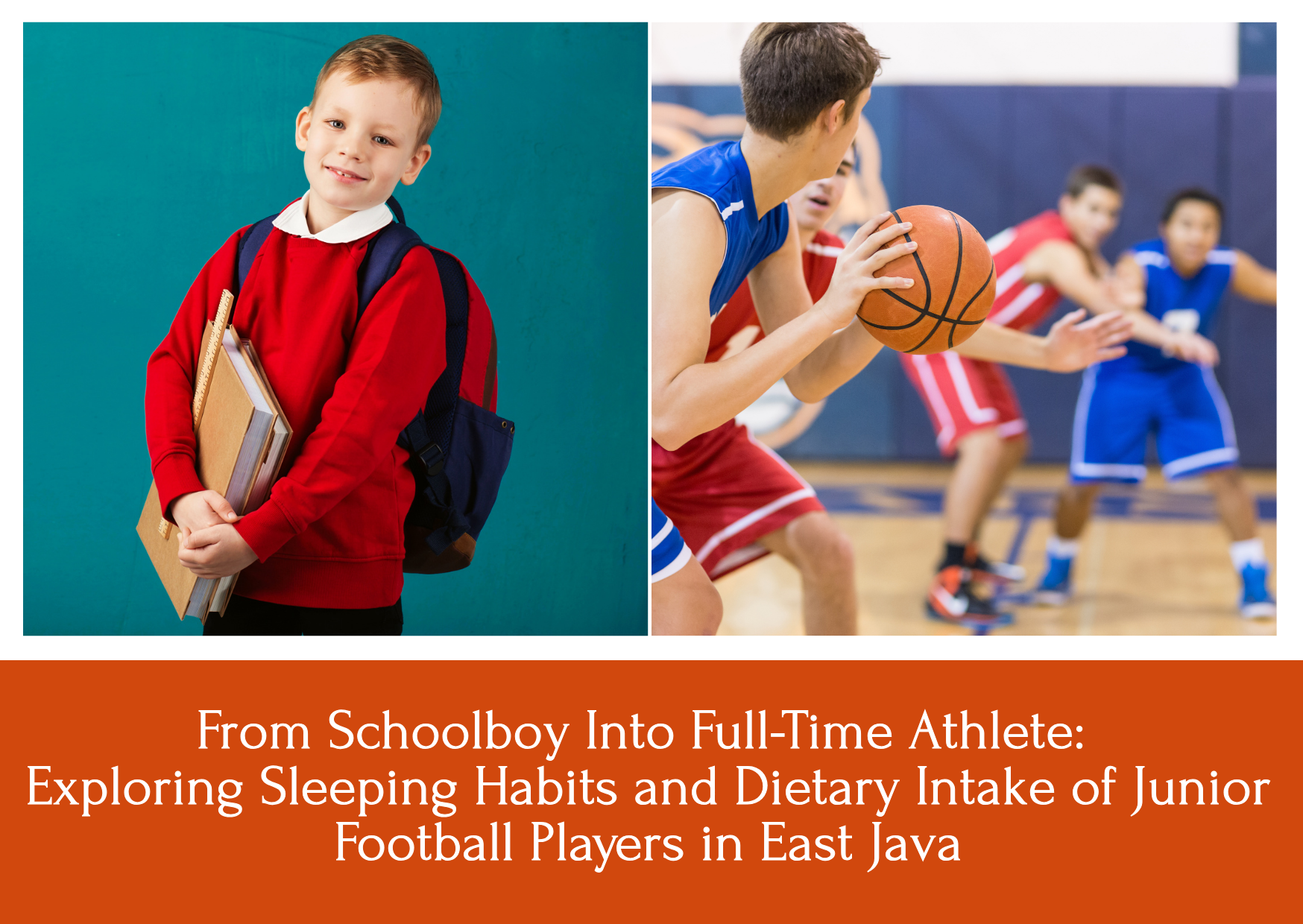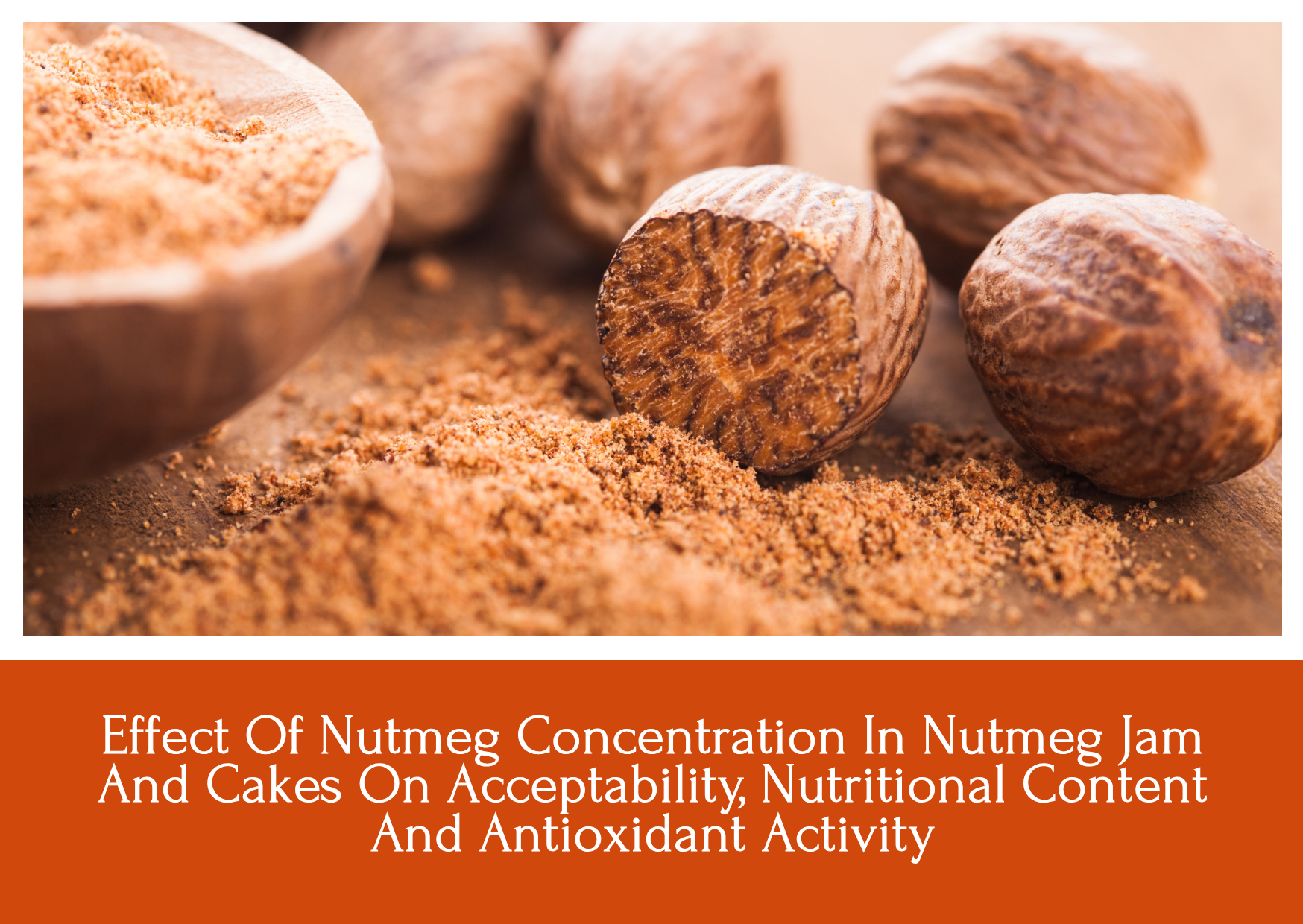Effectiveness of Nutrition Education to Reduce the Risk of Sports Injury in Young Soccer Athletes
Downloads
Physical exercise is the main factor in improving the performance of athletes. Physical exercise may cause fatigue and increase the risk of injury. Most athletes have experienced injuries during training or competing, such as muscle pain, sprains, muscle tension, bruises, and minor injuries. The majority of athletes lack knowledge regarding the management of injuries through appropriate nutritional interventions. The importance of proper nutrition therapy education as one of the solutions to reduce the risk of sports injury. The purpose of this study was to observe the change in knowledge about proper nutritional therapy in dealing with injuries in young soccer athletes at PSS Sleman Development Center. The study was conducted in July 2022. The provision of education was given at the Macanan Field, Prambanan, Yogyakarta. The respondents were 22 U-16 athletes at PSS Sleman Development Center. Athletes were given a knowledge questionnaire before and after the provision of education. Data were analyzed using statistical software with descriptive analysis and Wilcoxon Signed Rank Test. The increase in athletes' knowledge was measured from the knowledge score before giving education, which was 86,36 and after being given education increased to 89,09 with an average difference of 2,73 (p=0,366). The maximum score after providing education is 100 with a minimum score of 60. Providing education to athletes can increase athlete's knowledge and understanding of the importance of proper nutritional intake in reducing the risk of sports injury.
Adiyaksa, M. 2019. 3 Pemain yang Cedera Parah Saat Membela Timnas Indonesia. https://www.bola.com/indonesia/read/3988472/3-pemain-yang-cedera-parah-saat-membela-timnas-indonesia. May 11, 2022 (15:00).
Afriani, Y., Hadjam, N.R, Farmawati, A. 2017. Pemberian minuman kombinasi maltodekstrin dan vitamin C terhadap mood negatif dan VO2 maks atlet sepak bola. Jurnal Gizi Klinik Indonesia, 13 (4): 196-204.
Afriani, Y., Sari, S., Sucipto, A., & Puspaningtyas, D. 2022. Optimalisasi Asupan Cairan dengan Tekanan Darah dan Denyut Nadi pada Atlet PS Sleman Development Center. Jurnal Pengabdian Pada Masyarakat, 7(1), 80-86.
Braakhuis, A.J. 2012. Effect of Vitamin C Supplements on Physical Performance. Current Sports Medicine Reports, 11 (4): 180-184.
Brand, N.A. 2018. Survey of Hydration Knowledge and Behavior in Youth Mountain Bike Teams. Theses and Dissertations. University of Arkansas. Arkansas.
D'Angelo, S., & Rosa, R. 2020. Oxidative Stress And Sport Performance. Sport Science 13 Suppl 1, 18-22.
Dosedˇel, M.; Jirkovskí½, E.; Macáková, K.; Krˇcmová, L.K.; Javorská, L.; Pourová, J.; Mercolini, L.; Remií£o, F.; Nováková, L.; Mladˇenka, P. 2021. Vitamin C”Sources, Physiological Role, Kinetics, Deficiency, Use, Toxicity, and Determination. Nutrients, 13, 615.
Džuvo, A. H., Valjevac, A., Lepara, O., Pjanić, S., Hadžimuratović, A., & Mekić, A. 2014. Oxidative stress status in elite athletes engaged in diff erent sport disciplines. Bosn J Basic Med Sci 14 (2), 58-62.
Fajriyah, T. 2016. Pemain Timnas Indonesia Sering Abai Cedera ACL. https://www.cnnindonesia.com/olahraga/20161104091602-147-170159/pemain-timnas-indonesia-sering-abai-cedera-acl. May 11, 2022 (16.00).
Grosso, G.; Laudisio, D.; Frias-Toral, E.; Barrea, L.; Muscogiuri, G.; Savastano, S.; Colao, A. 2022. On behalf of the Obesity Programs of Nutrition, Education, Research and Assessment (OPERA) Group Anti-Inflammatory Nutrients and Obesity-Associated Metabolic-Inflammation: State of the Art and Future Direction. Nutrients, 14, 1137.
Higgins, M.R., Izadi, A., Kaviani, M. 2020. Antioxidants and Exercise Performance: With a Focus on Vitamin E and C Supplementation. Int. J. Environ. Res. Public Health 17, 8452; doi:10.3390/ijerph17228452
Kapti, R.E. 2016. Efektifitas audiovisual sebagai media penyuluhan kesehatan terhadap peningkatan pengetahuan dan sikap ibu dalam tatalaksana balita dengan diare di dua rumah sakit kota malang. Skripsi. FKM, Gizi, Universitas Indonesia. Jakarta.
Kementerian Kesehatan RI. 2013. Pedoman Gizi Olahraga Prestasi. Kementerian Kesehatan RI. Jakarta.
Kementerian Kesehatan RI. 2018. Laporan Kesehatan Nasional RISKESDAS. Kementerian Kesehatan RI. Jakarta.
Kementerian Kesehatan RI. 2021. Panduan Pendampingan Gizi pada Atlet. Kementerian Kesehatan RI. Jakarta.
Koivisto, A. E., Olsen, T., Paur, I., Paulsen, G., Bastani, N. E., Garthe, I., et al. 2019. Effects of antioxidant-rich foods on altitude-induced oxidative stress and inflammation in elite endurance athletes: A randomized controlled trial. PLoSONE 14(6), 1-19.
Kuswari, M., Gifari, N. 2020. Periodisasi Gizi dan Latihan. Rajawali Pers. Depok.
Mahastuti, F., Rahfiludin, Z., & Suroto. 2018. Hubungan Tingkat Kecukupan Gizi, Aktivitas Fisik Dan Kadar Hemoglobin Dengan Kebugaran Jasmani (Studi Pada Atlet Basket Di Universitas Negeri Semarang). Jurnal Kesehatan Masyarakat (e-Journal), 6(1), 458–466.
McCartney, D., Desbrow, B., Irwin, C. 2017. The Effect of Fluid Intake Following Dehydration on Subsequent Athletic and Cognitive Performance: a Systematic Review and Meta-analysis. Sports Medicine - Open. 3 (13): 1-23.
Meyer, F., Szygula, Z., Wilk, B. 2016. Fluid Balance, Hydration, and Athletic Performance. CRC Press. New York.
Mubarok, K., Afif Julianto, M., & Dai, M. 2021. Pencegahan Cedera Dalam Permainan Sepak Bola. 1(2), 2774–9754.
Murray, B. 2007. Hydration and Physical Performance. Journal of the American College of Nutrition, 26 (5), 542S–548S.
Notoatmodjo, S. 2010. Promosi Kesehatan dan Ilmu Perilaku. PT. Rineka Cipta. Jakarta.
Nurikhsani, G. 2022. Data Lengkap Prestasi Timnas Indonesia di SEA Games. https://www.bola.com/indonesia/read/4933077/data-lengkap-prestasi-timnas-indonesia-di-sea-games. May 11, 2022 (16:30).
O'Reilly, J., Wong, S.H. 2013. Effect of a carbohydrate drink on soccer skill performance following a sport-specific training program. Journal of Exercise Science & Fitness 11: 95-101.
Pambudi, B.I., Fauzi, E.R. 2019. Makanan Indeks Glikemik dari Anaerobic Shuttle Test dalam Melihat Daya tahan Atlet Bulutangkis. Jurnal Dunia Gizi, 2 (2): 94-100.
Puspaningtyas, D. E. et al. 2019. ‘Edukasi Gizi Efektif Meningkatkan Pengetahuan Atlet Mengenai Gizi Seimbang Dan Pemenuhan Kebutuhan Cairan', Jurnal Pengabdian Dharma Bakti, 2(2).
Puspaningtyas, D. E. et al. 2021. ‘Pendampingan Pengaturan Makan Atlet Akademi PS Sleman Menggunakan Aplikasi Diet Berbasis Online'. Universitas Respati Yogyakarta: Laporan Pengabdian Masyarakat.
Putriana, D., Dieny, F.F. 2014. Konsumsi Cairan Periode Latihan Dan Status Hidrasi Setelah Latihan Pada Atlet Sepak Bola Remaja. Skripsi. Universitas Diponegoro. Semarang.
Rosintan, & Napitupulu, M. 2021. Pencegahan Dan Penanganan Cedera Olahraga Pada Siswa Sekolah Menengah Kejuruan Negeri 10 Cawang. Jurnal Fisioterapi Dan Rehabilitasi, 5(1), 76–95.
Safitri, D. A., Khusniya, I., & Dai, M. 2021. Pengetahuan Dan Penanganan Cidera Berat Pada Atlet Karate. 1, 97–105.
Sari, S. P., Afriani, Y. Puspaningtyas, D.E. Mukarromah, N. 2018. ‘Gambaran Sikap Atlet Mengenai Gizi Seimbang dan Pemenuhan Kebutuhan Cairan', Berita Kedokteran Masyarakat, 34(11).
Setiawan, A. 2011. Faktor Timbulnya Cedera Olahraga. Jurnal Media Ilmu Keolahragaan Indonesia, 1 (1): 94-98.
Sjamsuhidajat, R.; Karnadihardja, W.; Prasetyono,T.O.H.; Rudiman, R., 2010. Sjamsuhidajat-De Jong: Buku Ajar Ilmu Bedah. Edisi 3. EGC. Jakarta. pp: 619-37.
Sucipto, A., Puspaningtyas, D.E., Afriani, Y., Sari, S.P. 2022. Pengetahuan dan Penanganan Cidera Olahraga Atlet PS Sleman Development Center Melalui Edukasi Online. Jurnal Pengabdian "Dharma Bakti" 5 (2): 85-94.
Susanti, R., Sofiyatin, R., Abdi, L.K. dan Luh Suranadi. 2018. Pengaruh Pendidikan Gizi Melalui Media Buku Sakudengan Metode Ceramah Terhadap Pengetahuan Gizi Atlet di Pusat Pendidikan Dan Latihan Pelajar (PPLP) Provinsi Nusa Tenggara Barat Tahun 2018. Jurnal Gizi Prima. 3 (2): 93-99.
Waryana and Wijanarka, A. 2013. Dasar-dasar Ilmu Komunikasi Gizi. Penerbit Fitramaya. Yogyakarta.
Zahra, S., Muhlisin. 2020. Nutrisi Bagi Atlet Remaja. JTIKOR (Jurnal Terapan Ilmu Keolahragaan), 5 (1): 81-93.

This work is licensed under a Creative Commons Attribution-NonCommercial-ShareAlike 4.0 International License.
- MEDIA GIZI INDONESIA Journal is the copyright owner of all materials published on this website.
- The formal legal provisions for access to digital articles of this electronic journal are subject to the terms of the Creative Commons Attribution-NonCommercial-ShareAlike license (CC BY-NC-SA 4.0), which means that MEDIA GIZI INDONESIA Journal and readers reserve the right to save, transmit media / format, manage in database, maintain, and publish articles as long as it continues to include the name of the Author.
- Printed and published print and electronic manuscripts are open access for educational, research and library purposes. In addition to these objectives, the editorial board shall not be liable for violations of copyright law.


2.png)




















